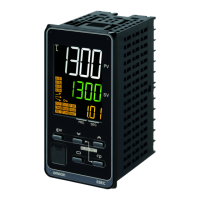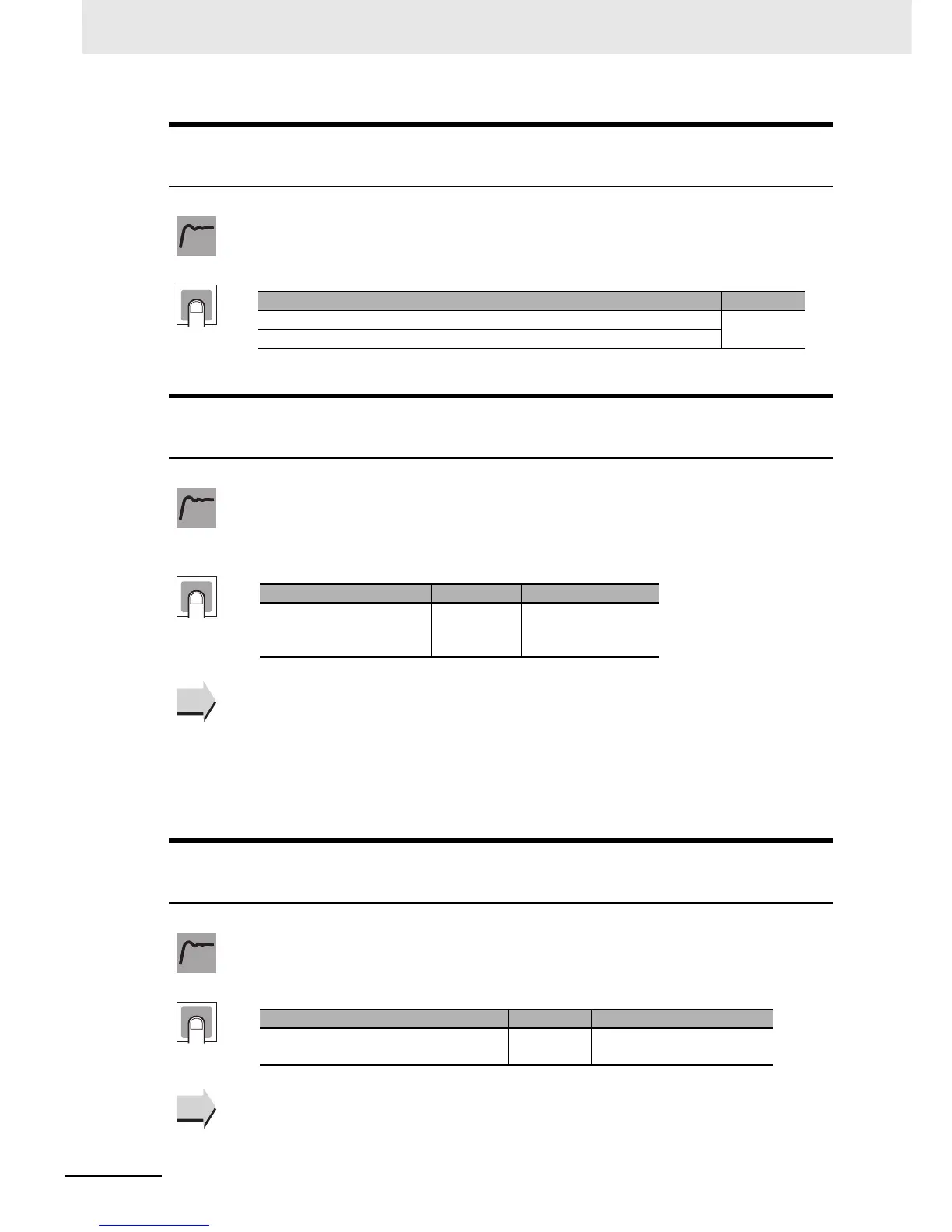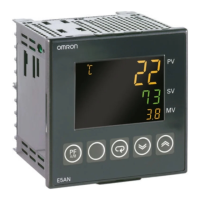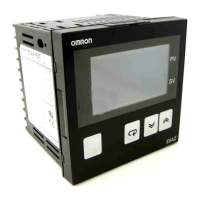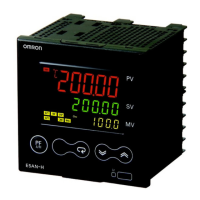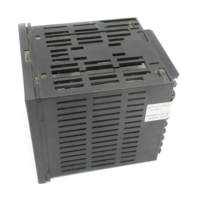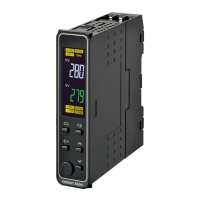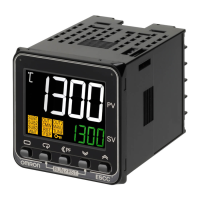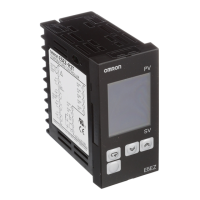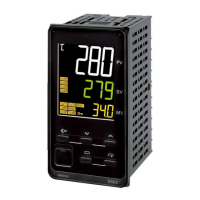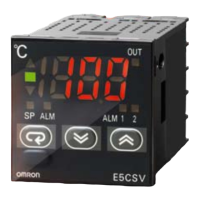6 Parameters
6 - 82
E5@C-T Digital Temperature Controllers User’s Manual (H185)
init
Parameter Initialization
• This parameter returns all parameter settings to their defaults.
• After the initialization, the set value automatically turns OFF.
pend
Program End ON Time
• This parameter sets the pulse width of the program end output.
The setting range is ON or 0.0 to 10.0 s. The default is 0.0 s.
• If ON is set, the output will remain ON until the Run/Reset parameter is changed to Run
during reset status.
z Related Sections
5-15 Program-related Functions (page 5-53)
z Related Parameters
Control Output 1 and 2 Assignment (Initial Setting Level): Page 6-97
Auxiliary Output 1 to 4 Assignment (Initial Setting Level): Page 6-98
s-u
Standby Time Unit
• This parameter sets the unit for the standby time.
Always set this parameter before setting the standby time.
z Related Parameters
Standby Time (Adjustment Level): Page 6-34
Function
Setting
Setting range Default
off: Initialization is not executed. off
fact: Initializes to the factory settings described in the manual.
Function
Setting
Setting range Unit Default
on: Output continuously.
0.0: No output.
0.1 to 10.0
Seconds 0.0: No output.
See
See
Function
Setting
Setting range Unit Default
h-m: Hours and minutes
d-h: Days and hours
--- h-m: Hours and minutes
See
See
